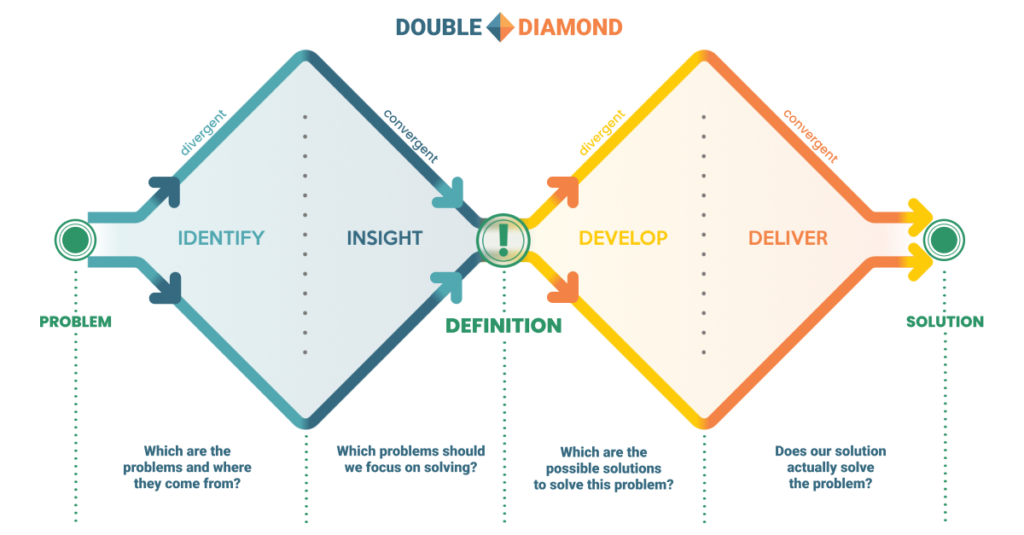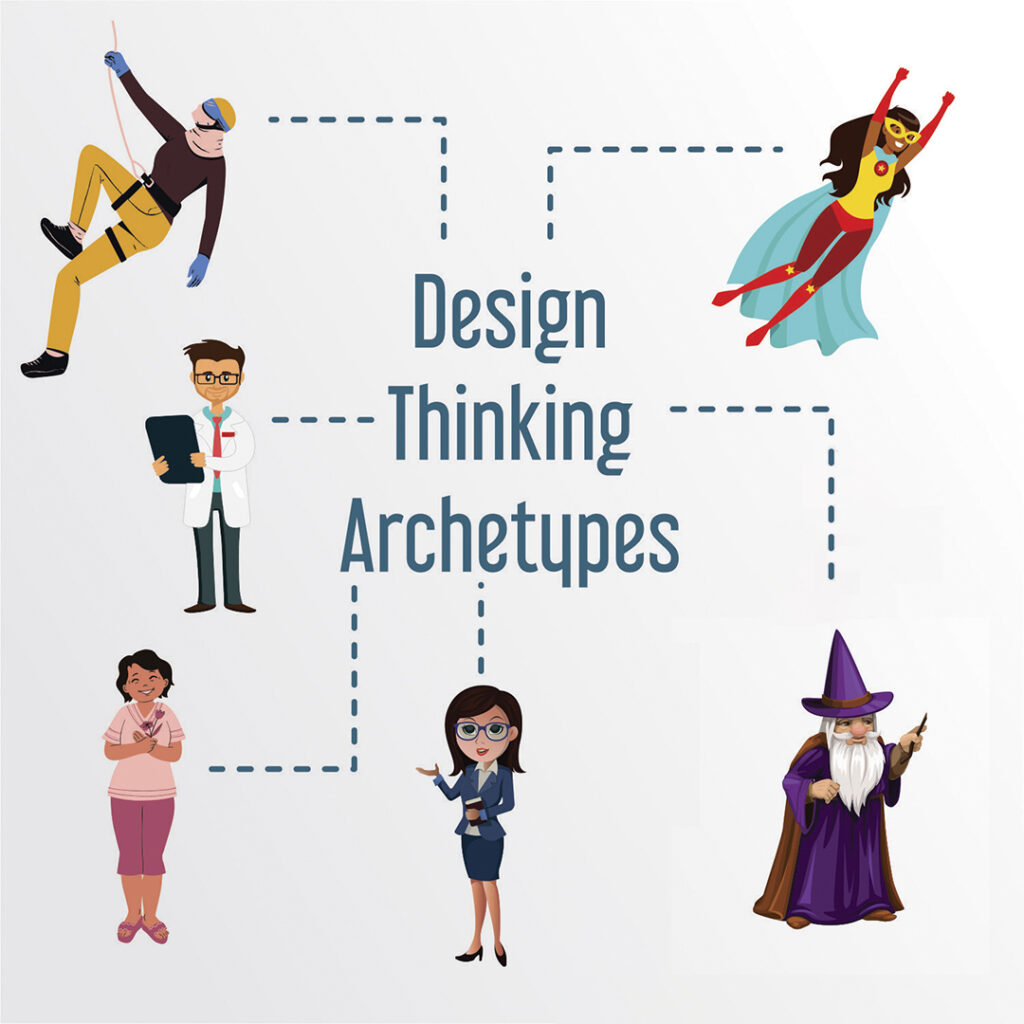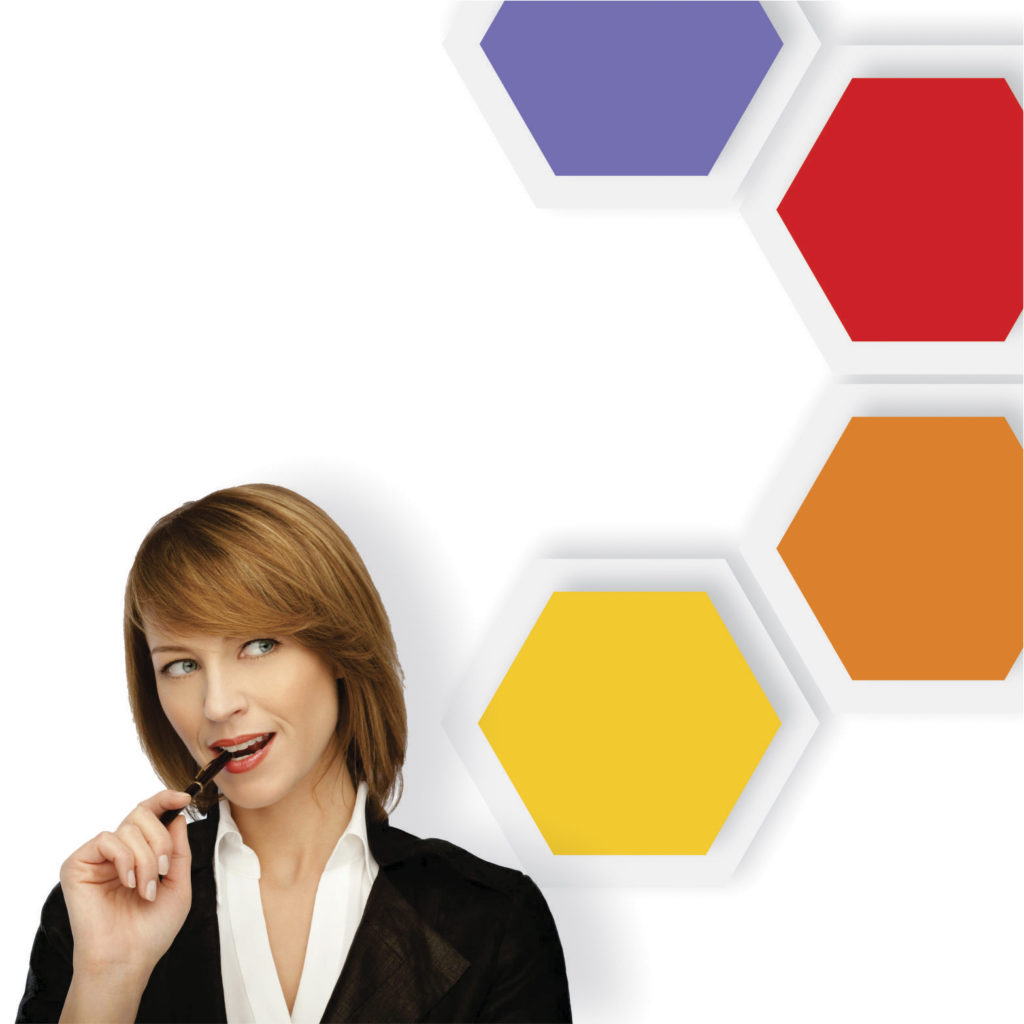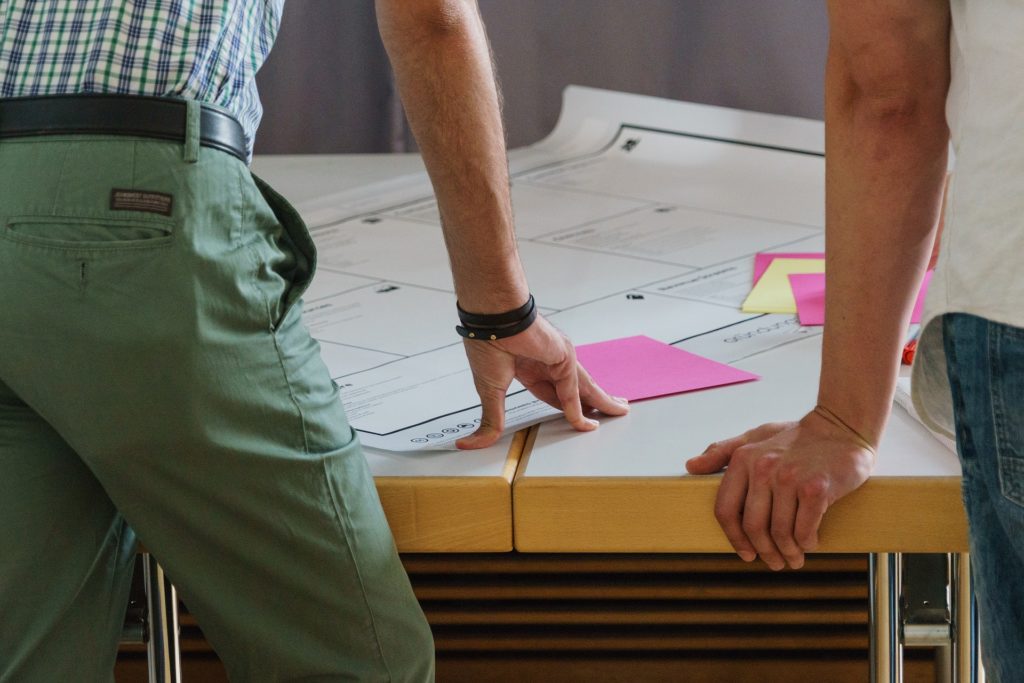Design thinking is a framework for the creative problem-solving process. It breaks down the traditional sequential approach to problem-solving.
The Double Diamond model is one of the most useful visual tools available to designers. It is a design thinking process created by the British Design Council that has been adopted by many, including organizations like the World Bank. The work focuses on helping companies develop new products and services. It’s a technique that allows companies to find insights, create a vision of what they are trying to create, build prototypes and test those ideas.
What is the Double Diamond process?
The Double Diamond is a process model for design thinking. It was originally developed by the British Design Council in 2005 and has since been adopted by many organizations, schools, and individuals. The Double Diamond is a great introduction to the concept of design thinking because it’s easy to understand and implement.
The idea behind the Double Diamond is that there are often two sides to every problem — one obvious and one less so. To reach the less obvious side, you first need to understand the problem at hand, then you need to identify a possible solution, and finally, you need to make it real. The first diamond is about understanding the problem and identifying potential solutions. The second diamond explores and elaborates these potential solutions and develops a preferred one.
The double diamond isn’t an iterative process or a cycle. Only one iteration of the double diamond diagram is used throughout the design thinking process, and it is not a linear process.
It may be that when you get to the second diamond and you discover holes in the knowledge and understand that you need to dig deeper in your research, going back to the first diamond.
Or it could be that you discover adjacent issues that haven’t been mapped and need to start the process again, and that’s ok, don’t get attached to the order of factors. They can vary according to your team’s floor and needs!
How does the Double Diamond process help companies develop new solutions?
The Double Diamond process has four phases: discover, define, develop, and deliver. Each phase contains two steps separated by a diamond shape (hence the name). In total, the process consists of eight steps that you can use to approach any challenge in business or life. Here’s how it works:
- Discover: The first step is to gain a deep understanding of the problem you are trying to solve.
- Define: The second stage is when you outline your findings from the Discovery phase and begin developing personas.
- Develop: This is where you brainstorm solutions to the problem at hand.
- Delivery: This is where you test and refine your ideas through experimentation to determine which ones will work best for your customers.
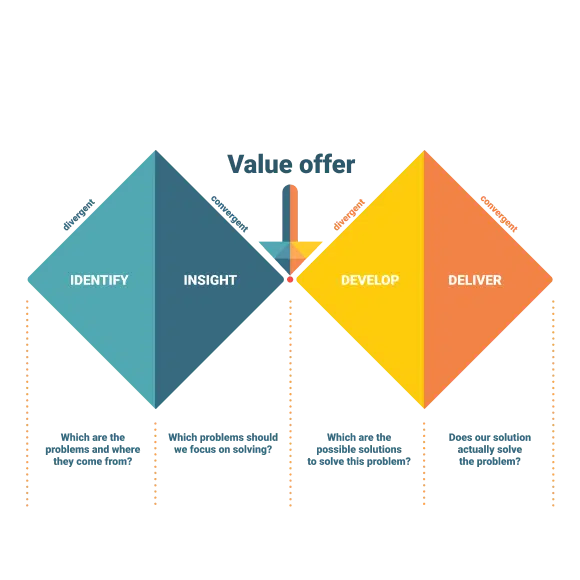
The first two phases of the Double Diamond — Discover and Define — are about exploration and understanding. They’re about understanding your users’ needs, their problems, and what opportunities you may have to help them overcome those problems.
This is when you do user research to identify your users’ needs and goals. These first two stages in the Double Diamond often occur simultaneously, as your team bounces back and forth between them, trying to solidify their understanding of the problem.
Then you use that knowledge to build a solution that meets those needs in the Develop phase. But the process doesn’t end there! You deliver alpha and beta prototypes to real users, test them in their environments, gather feedback, and iterate until you have a solution.
Who can benefit from the Double Diamond process?
The Double Diamond model helps designers methodically work through each process stage.
It can be especially helpful for product development teams working on highly complex or brand new challenges — those where they can’t simply rely on best practices from previous design projects. This forces teams to dig into their users’ needs and thoroughly test before developing solutions.
But the Double Diamond approach is just one method of many out there for guiding a design project. If your organization has a well-established way of working, the Double Diamond may not offer much value. Keep in mind that a design framework is not a substitute for applying critical thinking at every stage of development.
The best way to learn if any Design Thinking technique will work for you is by assessing your problem.

